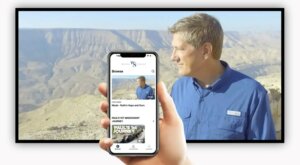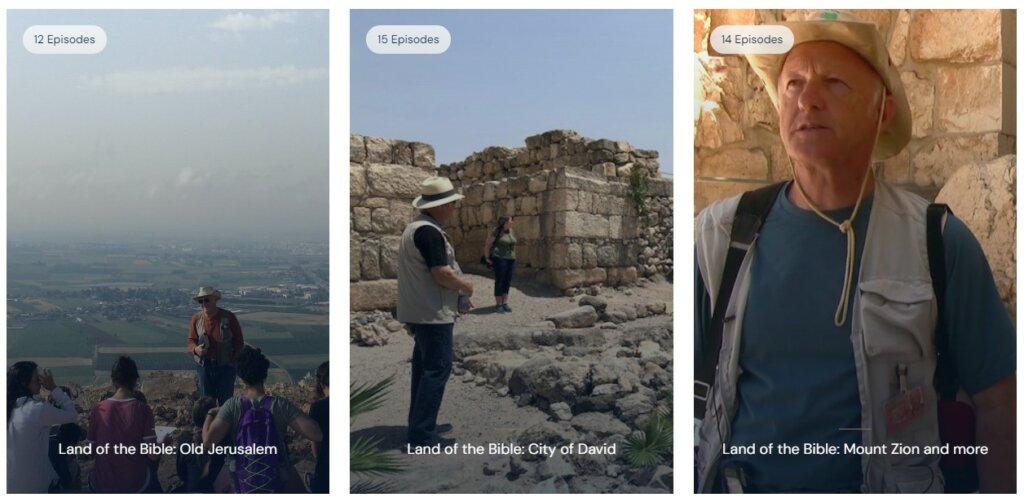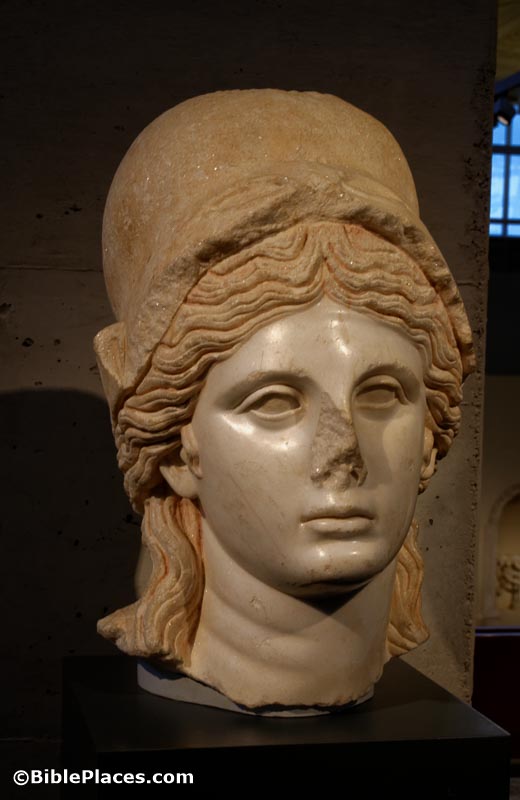My longtime friend, Wayne Stiles, has spent the past seven years developing a wonderful website that features more than 200 videos that connect the Bible and its lands to life. He has traveled and filmed extensively in Israel, Jordan, Egypt, Greece, Turkey, and Italy.
The links below take you to the various regions and countries with trailers to watch. There’s even an app so you can watch it on the go—and on tours! The cost for joining is nominal—and a whole lot cheaper than taking a tour—and you experience more than many tours combined could offer.
In addition, you can use this code (BOLEN) to get a $10 credit—which allows you to rent two full episodes or to buy one of your choosing.
Judah and the South (39 episodes, including Gath, Libnah, Timna Valley, Negev Highlands—and more)
Galilee and the North (23 episodes, including Sepphoris, Tabgha, Hazor, Capernaum, Cana—and more)
Samaria and the Center (20 episodes, including Beth-shan, Jericho, Dothan, Gibeon—and more)
Jerusalem (24 episodes, including the Temple Mount, Kidron Valley, Walls and Gates, Western Wall—and more)
Greece (19 episodes, including Patmos, Rhodes, Philippi, Athens, Corinth—and more)
Rome and Malta (20 episodes, including Appian Way, Roman Forum, Malta, Pompeii—and more)
Turkey (29 episodes, including Troas, Ephesus, Assos, Tarsus, the Churches of Revelation—and more)
Egypt (8 episodes, including the Pyramids, Valley of the Kings, Nile River, Karnak Temple—and more)
Jordan (9 episodes, including Petra, Mount Nebo, Moab, Machaerus, Ammon—and more)
Interviews (11 interviews, including Bryant Wood, Scott Stripling, Carl Rasmussen, Charlie Dyer, and me)
If you are reading the Bible in 2024, Wayne also has a new Reading the Bible Lands program that goes through the whole Bible with videos, devotionals, and my photos—with the opportunity for Live Zoom calls with Wayne and other members to discuss the Bible reading and Q&A time.
Some years ago I wrote the following about Wayne, and I don’t think I can say it any better now:
“Wayne Stiles has a unique gift for bringing the biblical world into our own. Some teachers are history gurus, but they can’t translate their research into how it affects us today. Wayne is superb at doing this in his books, on his blog, on his podcast, and at the sites. He is passionate, accurate, and faithful.”
Wayne’s resources are outstanding in every way, and I’m very thankful for the ways he has applied his giftings and energies to create excellent tools to increase our love for and understanding of God’s Word.


